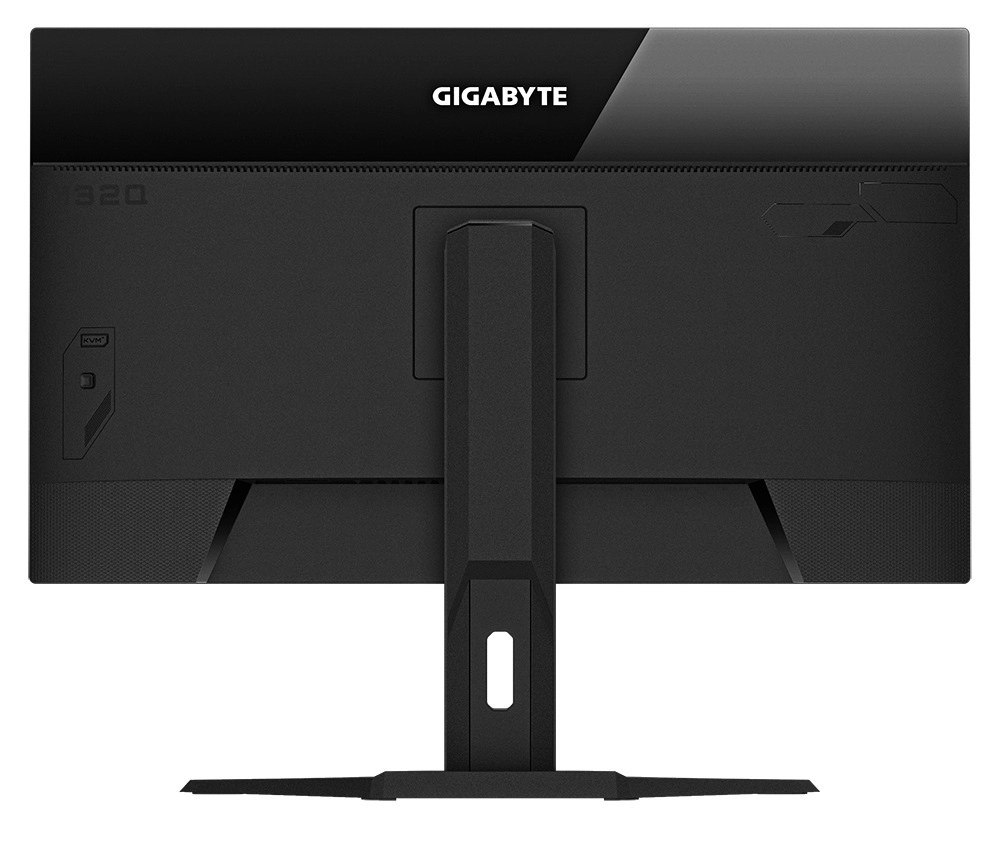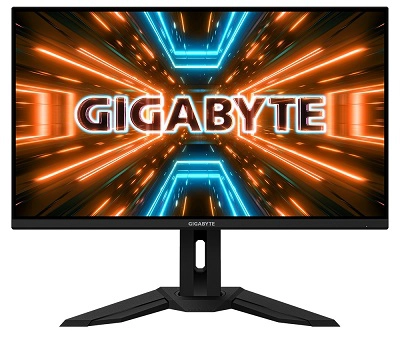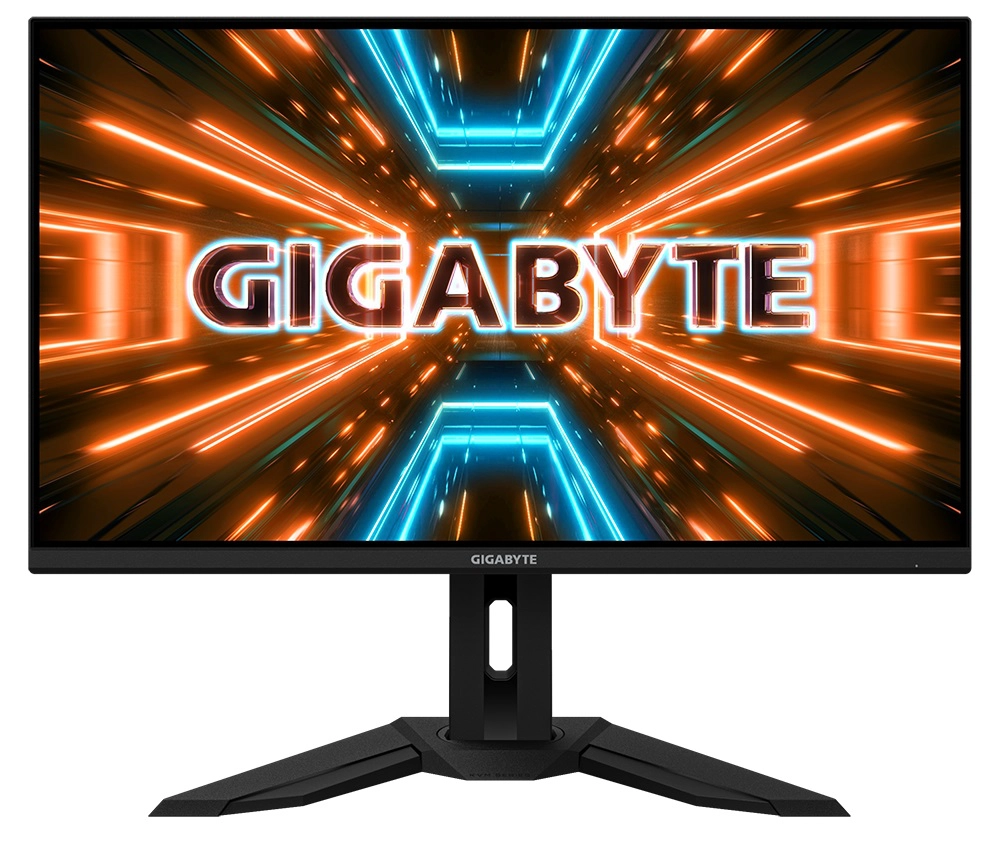Gigabyte M32Q 170Hz WQHD IPS option
As an Amazon Associate I earn from qualifying purchases made using the “Buy” button at the bottom of this post. Where possible, you'll be redirected to your nearest store. Further information on supporting our work.~32″ monitors with a 2560 x 1440 (WQHD) resolution offer an immersive experience and good amount of desktop real-estate, an experience some users will really enjoy for both work and play. The Gigabyte M32Q offers this combination, with the simple styling cues of others in the series. Dark matte plastics are used extensively, including for the stand and bottom bezel. The top and side bezels are dual-stage, including a slim panel border that’s flush with the rest of the screen plus a slender hard plastic outer component. The OSD (On Screen Display) is controlled by a joystick at the rear, towards the right side as viewed from the front. There’s also a dedicated KVM button to allow users to quickly swap USB peripherals between systems.
A 31.5″ 2560 x 1440 (WQHD or 1440p) IPS-type panel is employed, specifically an Innolux AAS panel. A 170Hz refresh rate is supported (165Hz + mild internal factory overclock), alongside Adaptive-Sync. This includes AMD FreeSync with an assumed 48 – 170Hz VRR range, plus LFC. Other aspects to note include a light to very light matte anti-glare screen surface, 1000:1 static contrast, 178° horizontal and vertical viewing angles and true 8-bit colour output. The screen uses a flicker-free WLED backlight, yielding a typical maximum luminance of 350 cd/m² (400 cd/m²+ HDR) and a 94% DCI-P3 colour gamut. The monitor includes TÜV Rheinland’s ‘Eyesafe’ certification, part of which includes the shifting of the backlight’s blue peak to less energetic wavelengths. VESA DisplayHDR 400 certification is included, allowing the monitor to put its fairly generous colour gamut to good use and for 10-bit colour processing to be used. This doesn’t necessitate particularly high brightness levels by HDR standards or local dimming for the backlight, though, so is far from a true HDR experience. A 1ms grey to grey response time is specified, alongside an 0.8ms MPRT – approach both figures with caution. The MPRT response time is specified using the Aim Stabilizer Sync strobe backlight setting, which allows Adaptive-Sync to be used at the same time. The stand offers tilt, swivel and height (130mm or 5.12 inches) adjustment and can be removed to make way for an alternative 100 x 100mm VESA compatible solution. The ports face downwards and include; AC power input (internal power converter), 2 HDMI 2.0 ports, DP 1.4, 2 USB 3.0 ports (plus upstream), USB-C (~10W-15W PD assumed, DP Alt Mode, upstream data), 3 USB 3.0 ports (plus upstream) and a 3.5mm headphone jack. The monitor includes KVM capability with a quick switch, allowing USB devices connected to the monitor to be shared between multiple systems. PiP/PbP functionality is also included, whilst the screen includes 2 x 3W speakers for basic sound output.

Further details can be found on the manufacturer’s website. The monitor is listed for ~$500 USD.


